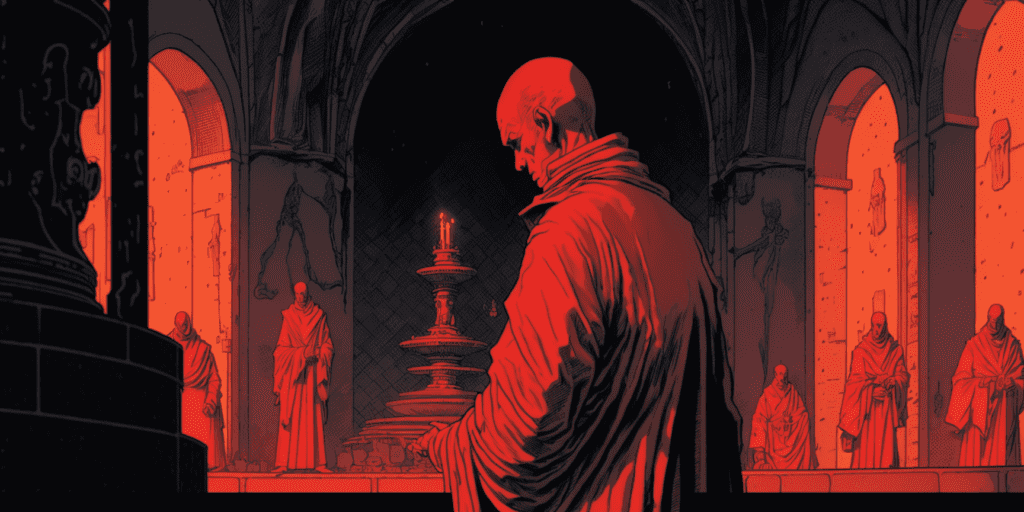The concept of crits, or critical hits, is present in very many games, ever since Empire of the Petal Throne introduced it in 1975.
Now, the term generally means that you in some way luck out and deal an extra amount of damage. The way games present the extra damage and the way it works mechanically, however, differs.
So, what is Dungeons and Dragon’s take on the term? What happens when someone critically hits in Dungeons and Dragons, and what is a critical hit a result of?
Critical hits in Dungeons and Dragons occur when you roll a natural 20 on a d20 die. They only happen on attack rolls. After you have rolled a natural 20, you get to double the dice you then roll for damage. This includes your regular damage die, plus extra dice that you would get from special attacks, such as Rogues’ Sneak Attack. Critical hits do not affect fixed modifiers.
It might seem a bit unclear, and it’s hard, to sum up in just a paragraph. Let’s explore the topic of critical hits further, and get to the bottom of it.
How Do Critical Hits Work in DnD?

As I mentioned earlier, critical hits (“crits”) only happen after you have used an attack roll on a target. That doesn’t necessarily mean that you have to hit it with a ranged or melee weapon, however, as there are skills in DnD that uses attack rolls.
I also mentioned that you have to roll a “natural” 20. This simply means that you have to get a 20 when you roll the die before you apply any potential bonuses.
For example, if you would roll 17 and then get 20 as a result of some sort of bonus, you would not critically hit your target.
Make sure to check what type of roll your skills are using, because skills with similar names can use different kinds of rolls. For example, Fire Bolt uses an attack roll while Fireball uses a Dexterity saving throw.
Fixed additional damage is not affected on a critical hit. For example, if your weapon is buffed with Magic Weapon (which grants +1 to attack and damage rolls), and then you roll a natural 20, you don’t get to double that number to 2.
Furthermore, some attacks trigger further dice rolls. The triggered dice rolls do not benefit from the critical hit.
An important note regarding crits in DnD is that they automatically hit. If you roll a 20, your target receives a critical hit regardless of AC (armor class), or any conditions that would evade your strike on something else than a 20.
Alternative Critical Hit Rules and Exceptions

Some DMs dislike the crit rules of DnD and change them up. One option that DMs use sometimes is to grant players the max damage for their damage roll (for example, they automatically get the 8 from their 1d8 damage roll), and then let them roll their crit die.
There are various options if you don’t want to play with the normal crit rules. Personally, I like the feeling of rolling dice and I very much appreciate the traditional 5e critical hit system.
The number required for a critical hit stays the same, almost without exception. There is no WotC-published weapon that makes critical hits trigger on anything less than a natural 20.
I said almost without exception. That’s because Champion Fighters get to crit on 19, and later levels, 18. However, they’re the only ones that get to lower the required roll for a crit.
Critical hit damage can be modified by a couple of things. For example, level 9 or higher Barbarians get to roll additional dice when they critically hit (the Player’s Handbook):
“Beginning at 9th Level, you can roll one additional weapon damage die when determining the extra damage for a critical hit with a melee Attack. This increases to two additional dice at 13th level and three additional dice at 17th level.“
Moreover, Half-Orcs also get to beef up their critical hits using their Racial ability, Savage Attacks (from the Player’s Handbook):
“When you score a critical hit with a melee weapon Attack, you can roll one of the weapon’s damage dice one additional time and add it to the extra damage of a critical hit.”
You might be asking yourself if Half-Orc Barbarians get to stack these both together for a mega-hit, and the answer is yes. It’s even better if they’re wielding the Vicious Rapier magic weapon. The Vicious Rapier is a magic weapon that lets you buff your critical hit damage even more!
“When you roll a 20 with this Magic Weapon, the target takes an extra 2d6 piercing damage.“
Critical Hits on Ability Check or Saving Throw

Normally, critical hits don’t count on ability checks or saving throws. However, the Dungeon Master’s Guide almost encourages DMs to be creative regarding this. From the Dungeon Master’s Guide:
“Rolling a 20 or a 1 on an ability check or a saving throw doesn’t normally have any special effect. However, you can choose to take such an exceptional roll into account…”
The DMG goes on to suggest that an easy way of making high or low-scoring ability checks/saving throws have an impact is simply increasing or decreasing the impact of the result.
So, according to the basic rules of Dungeons and Dragons, ability checks and saving throws don’t use the natural 20 in any special kind of way, but it’s ultimately up to the DM to decide how to use ability checks and saving throws.
What Is A Critical Miss in DnD?
Contrary to critical hits, we have critical failures, or critical misses. If you roll a 1 on an attack roll, the attack misses automatically.
Critical hits don’t take additional modifiers into account, and neither do critical misses. If you roll a 1 on your d20, your attack misses, no matter how many additional modifiers you may have.
Interestingly, rolling a 1 on a death save is particularly outrageous, because then you fail two times instead of one. If you want to read more about death saving throws, I suggest the resource listed below.
Can Enemies Crit?
Yes, enemies can also critically hit in DnD 5e, as opposed to some of the other versions of the game. Getting crit by an enemy when your character is at a low level can be pretty busted because early-game characters are much more vulnerable to spikes in damage.
If you have paid great attention to detail when reading Unearthed Arcana 2022 – Character Origins, you have found the wording is somewhat confusing regarding critical hits: “Weapons and unarmed strikes have a special feature for player characters: critical hits”.
This might leave you wondering, but in the DMG, we can see that critical hits go for enemies as well: “A monster follows the same rule for critical hits as a player character.”

